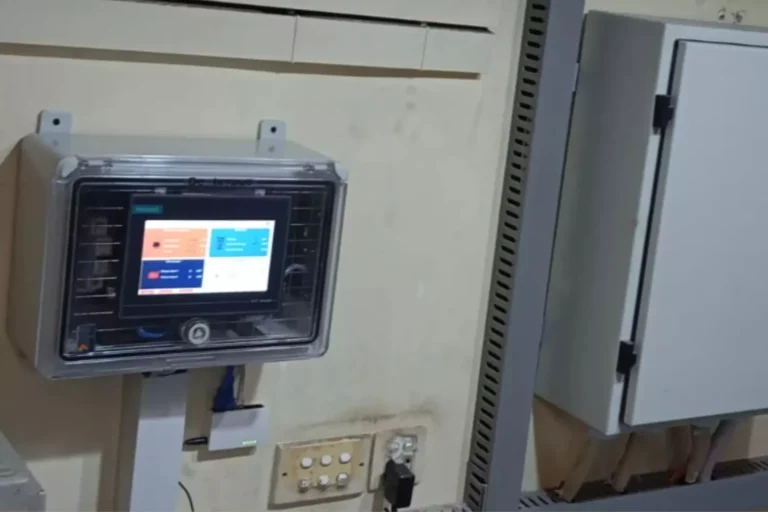SCADA System in Industry: Smart Automation for a Sustainable Future
In today’s era of Industry 4.0, industries are rapidly embracing smart automation and remote control technologies to enhance productivity, safety, and energy efficiency. One of the most powerful technologies driving this transformation is the SCADA system — Supervisory Control and Data Acquisition.
At Force-V, we specialize in delivering innovative, reliable, and sustainable automation solutions, integrating SCADA systems for solar, power, and industrial applications. Our goal is to empower industries with intelligent monitoring and control capabilities that ensure optimized performance and minimal downtime.
What Is a SCADA System?
A SCADA system is an advanced industrial automation solution used to monitor, control, and analyze processes in real time. It serves as the central nervous system of industrial operations, enabling engineers and operators to track performance, detect faults, and manage multiple sites remotely.
Through a combination of sensors, controllers, communication networks, and software interfaces, SCADA provides complete visibility of equipment and processes — whether in a manufacturing plant, a power distribution network, or a solar energy farm.
How a SCADA System Works
The working principle of SCADA revolves around four main functions: data acquisition, communication, processing, and control.
- Data Acquisition – Sensors and instruments installed across the system continuously collect data such as temperature, pressure, current, and voltage.
- Data Communication – This data is transmitted through a secure communication network to Remote Terminal Units (RTUs) or Programmable Logic Controllers (PLCs), which forward it to a central server.
- Data Processing and Visualization – The SCADA software processes this data and displays it on a Human-Machine Interface (HMI), allowing operators to visualize system performance in real time.
- Control and Optimization – Operators can remotely adjust system parameters, start or stop equipment, and respond instantly to alarms — ensuring safety, stability, and operational efficiency.
This continuous feedback loop enables smart monitoring and precise remote control, both critical for large-scale industrial and energy systems.
Main Components of a SCADA System
A modern SCADA architecture includes four essential layers working in harmony:
1. Field Devices (Sensors and Actuators)
These are the eyes and hands of the system. Sensors collect process data, while actuators perform actions like opening valves or controlling motors.
2. RTUs and PLCs
Remote Terminal Units (RTUs) and Programmable Logic Controllers (PLCs) act as intelligent field controllers. They interpret sensor data and execute automated commands to maintain optimal performance.
3. Communication Network
The network connects field devices with the central SCADA system. It can use Ethernet, fiber optics, or wireless communication protocols for fast and reliable data transfer.
4. SCADA Software and HMI
This is the system’s intelligence and interface. The SCADA software performs data analysis, logging, and alarm management, while the HMI provides a user-friendly dashboard for operators to monitor and control processes efficiently.
Advantages of SCADA in Industrial Automation
Implementing a SCADA system provides multiple advantages that align with the goals of smart manufacturing and energy management:
- Real-Time Monitoring: Continuous visibility of process parameters across distributed assets.
- Remote Control: Operate systems from anywhere, reducing the need for on-site supervision.
- Operational Efficiency: Automated control and fault detection minimize downtime and maintenance costs.
- Energy Optimization: Advanced analytics improve energy management and reduce wastage.
- Data-Driven Decisions: Historical data helps predict failures, optimize production, and ensure compliance.
- Scalability and Flexibility: Easily expand or integrate with IoT and cloud systems for future growth.
Force-V: Smart and Reliable SCADA Integration
At Force-V, we go beyond standard automation. Our SCADA-enabled solutions are designed to deliver precision, reliability, and sustainability across diverse industries.
We provide end-to-end integration — from system design and hardware installation to custom software development and remote monitoring setup.
Our Expertise Includes:
- Solar and Renewable Energy Systems: Real-time performance tracking and intelligent energy management for solar plants and hybrid systems.
- Power and Utility Networks: Fault detection, load management, and preventive maintenance for uninterrupted power supply.
- Industrial Process Automation: Seamless SCADA integration with PLCs and IoT platforms to enhance productivity and reliability.
By combining robust engineering with innovative software, Force-V helps industries transition toward smart, connected, and sustainable operations that reflect the true spirit of Industry 4.0.
Conclusion
The SCADA system is the cornerstone of industrial automation and smart manufacturing, enabling precise monitoring and control of complex systems. With proven expertise in automation and energy management, Force-V delivers smart, reliable, and sustainable SCADA solutions tailored for industrial, power, and renewable sectors.
Choose Force-V as your trusted partner in achieving operational excellence through innovation, intelligence, and integrated automation.
![Force-V [Into the Future]](https://force-v.co/wp-content/uploads/2025/10/cropped-WhatsApp-Image-2025-10-08-at-10.07.00-AM.jpeg)



